The science of fishing
FLW Tour pros weigh in on the best new innovations in bass fishing
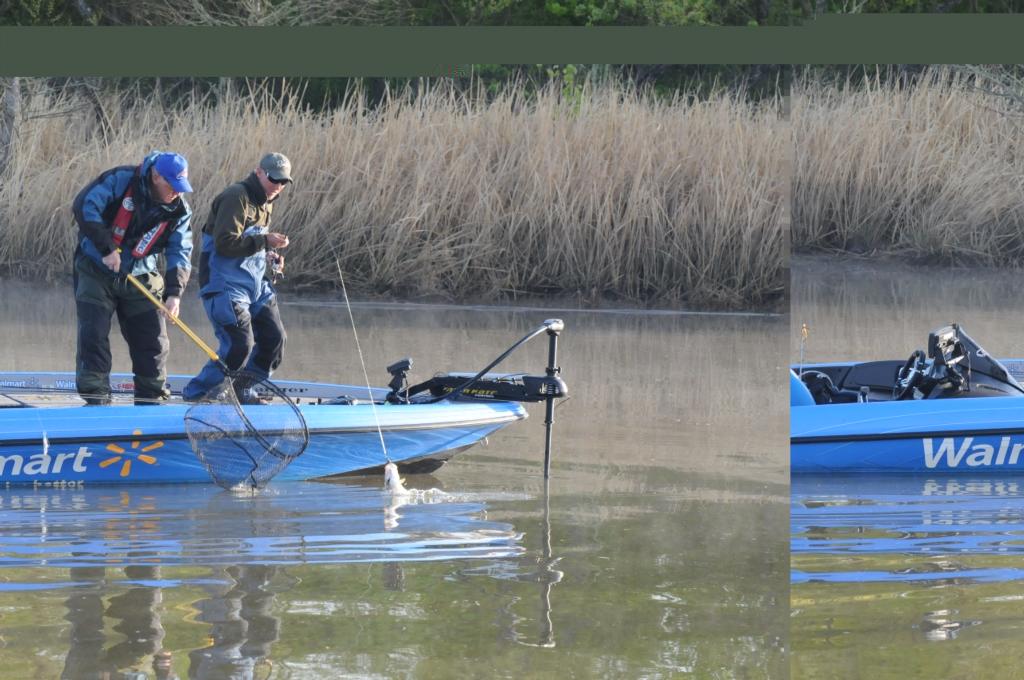
Technological innovations have long been an integral part of the sport of professional bass fishing. As such, successful anglers are constantly on the lookout for new techniques and tools to elevate their game in an effort to gain an edge over the competition. But what are some of the newest innovations in the sport that anglers have been paying particular attention to? To help answer that question, the staff at FLWOutdoors.com decided to contact a diverse array of FLW Tour pros to get their thoughts on the topic.
In addition to asking the pros to provide their take on which major innovations have had the most impact on the sport over the past few years, FLWOutdoors.com also asked each pro to reveal their Achilles Heel and divulge which fishing techniques they’d personally like to improve upon the most.
The following is a partial transcript from those interviews:
——————————
FLWOutdoors.com: “In your opinion, what is the most significant innovation in bass fishing over the past few years?”
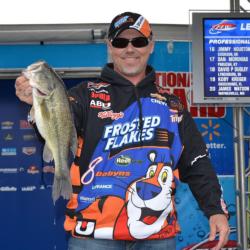 Kellogg’s pro Dave Lefebre – Union City, Pa.: “I’d have to say the Lowrance Structure Scan. There were obviously sonar units and depth finders before that but the new Structure Scan really takes it a step further. It’s a huge innovation because the Structure Scan basically gives you another eye under the water. With the structure scan, it gives you the option of not only seeing what’s directly under your boat, but you can also see what’s going on under the water from side to side as well. With the Structure Scan, you can cover a lot more water and create waypoints as far as 80 feet away from your boat. It also makes your practice time much more efficient.
Kellogg’s pro Dave Lefebre – Union City, Pa.: “I’d have to say the Lowrance Structure Scan. There were obviously sonar units and depth finders before that but the new Structure Scan really takes it a step further. It’s a huge innovation because the Structure Scan basically gives you another eye under the water. With the structure scan, it gives you the option of not only seeing what’s directly under your boat, but you can also see what’s going on under the water from side to side as well. With the Structure Scan, you can cover a lot more water and create waypoints as far as 80 feet away from your boat. It also makes your practice time much more efficient.
It really helps out a lot when you’re fishing large bodies of water like Lake Erie. There you’ll sometimes find giant schools of fish relating to some really small structure that you wouldn’t even see on your sonar or depth finder. But with the Structure Scan, you can really see everything – even if it’s something as tiny as a small stick.
Another thing that’s neat about Structure Scan is that I’ve fished structure for 20 years and now I can go back to those lakes I’ve fished all of my life and discover in detail what my key fishing areas really look like. I’ve done that countless times and it’s pretty cool. For example, on one lake I thought I was fishing a hump all of these years and as it turned out, it was an old boat covered with Zebra mussels. And there are plenty of other examples I could give along those same lines.
In my opinion, it’s the biggest must-have tool out there today.”
FLWOutdoors.com: “What techniques would you really like to improve upon heading into the second half of the 2011 season and beyond?”
Kellogg’s pro Dave Lefebre – Union City, Pa.: “This question is a no-brainer for me. Definitely one of my weaknesses is fishing for suspended bass. Those fish are usually inactive. So the thought of reeling a crankbait through an open water column and being successful catching those suspended bass really intrigues me. If I could spend a day on the boat with somebody, be a fly on the wall so to speak, it would definitely be David Fritts. He’s just so proficient with that style of fishing and I’d really love to see how that all comes together.
What I think some people don’t realize is that even as FLW Tour pros, you still need to keep on learning. If I have a bad tournament I definitely want to know why. The moment you lose that willingness to learn new things, you’re in trouble and might as well give up on fishing professionally.”
——————————
FLWOutdoors.com: “In your opinion, what is the most significant innovation in bass fishing over the past few years?”
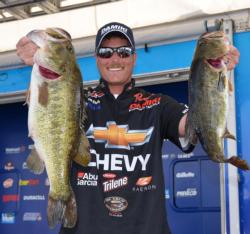 Chevy pro Bryan Thrift – Shelby, N.C.: “In my opinion, the biggest innovation over the last few years is how good the electronics are now. I have Hummingbird and Lowrance GPS units/depth finders and I feel that by using them in tandem I can get a far better feel for how things are shaping up out on the water. Specifically, the clarity that those electronics provide are really great – you don’t get as many false signals as you did before. Now when I see arches on the graph, I know there’s fish there. (Because of the sensitivity) you can now see fish on the graph and actually watch them follow your bait around. With the advances in color screens, you can now tell actually how hard the bottom is your fishing.
Chevy pro Bryan Thrift – Shelby, N.C.: “In my opinion, the biggest innovation over the last few years is how good the electronics are now. I have Hummingbird and Lowrance GPS units/depth finders and I feel that by using them in tandem I can get a far better feel for how things are shaping up out on the water. Specifically, the clarity that those electronics provide are really great – you don’t get as many false signals as you did before. Now when I see arches on the graph, I know there’s fish there. (Because of the sensitivity) you can now see fish on the graph and actually watch them follow your bait around. With the advances in color screens, you can now tell actually how hard the bottom is your fishing.
FLWOutdoors.com: “What techniques would you really like to improve upon heading into the second half of the 2011 season and beyond?”
Chevy pro Bryan Thrift – Shelby, N.C.: “You can always get better at everything. What people have to understand is no matter how good you are, you can always get better. Bass fishing isn’t like any other sport. In baseball, the pitcher’s mound is always 60 feet away and the bases are 90 feet apart. In basketball, the rim is always 10 feet high. But in bass fishing, you don’t have that because the playing field, so to speak, is different every time. So as a bass pro, you have to be prepared for everything.
As far as improving my techniques, the biggest thing is just having more confidence in the baits I’m throwing. However, that being said, I’d like to learn a little bit more about sight-fishing. I’d like to know more about how to get those spawning females to bite – especially when you have a female and a buck in the same general area. I would also like to improve my light-line fishing skills. I’d really like to get better at fishing lighter line in the 6-pound range, learning the parameters of what you can and can’t do with it. But like I said earlier, no matter how good you are, you can always improve on everything.”
——————————
FLWOutdoors.com: “In your opinion, what is the most significant innovation in bass fishing over the past few years?”
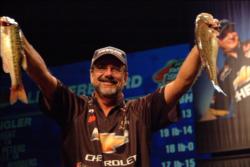 Chevy pro Larry Nixon – Bee Branch, Ark.: “Electronics are constantly changing and there are a bunch of innovations like the newer side scan units, etc., that I’d really like to figure out. I can see how advantageous those tools are going to be in the future and it’s definitely one of those things I need to learn.
Chevy pro Larry Nixon – Bee Branch, Ark.: “Electronics are constantly changing and there are a bunch of innovations like the newer side scan units, etc., that I’d really like to figure out. I can see how advantageous those tools are going to be in the future and it’s definitely one of those things I need to learn.
But as far as the most important innovations in our sport, I’d have to say the GPS units. It’s the biggest breakthrough in the history of bass fishing in my opinion. Now you really don’t even need lake maps anymore. I think a lot of the younger guys take those GPS units for granted now, but back in the day we didn’t have that luxury. It’d take us three or four days just to figure stuff out. But now you can wind up with 100 waypoints in a single day.”
FLWOutdoors.com: “What techniques would you really like to improve upon heading into the second half of the 2011 season and beyond?”
Chevy pro Larry Nixon – Bee Branch, Ark.: “As far as what I’d like to improve upon, the hardest thing for me these days is keeping up with all of the young guys. I’ve been doing this for 35 years and you never quit trying to learn new things. This might be different from some people, but my approach is to get better at the things I really like to do – drop-shotting, fishing deep and really (mastering) my GPS. These are some of the things I still work the hardest at but it’s also what I really like to do. And I continually try to get better at those techniques. At my age and with my aches and pains, power fishing is a little bit more difficult for me. So my main advantage is to stay one step ahead of the (field with regard to) finesse fishing techniques, drop-shots, and fishing plastic worms and jigs. But it’s also important to make sure that you learn something new every year – whether it’s how to fish a new lure, how to take advantage of a new color or how to fish a new style.”
——————————
FLWOutdoors.com: “In your opinion, what is the most significant innovation in bass fishing over the past few years?”
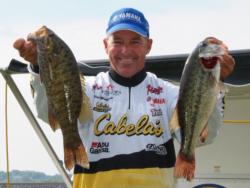 Cabela’s pro Clark Wendlandt – Leander, Texas: “I’d probably have to say that the one thing that’s changed the sport the most in the last few years has been the great improvements made to the mapping and GPS capabilities of electronics – especially when it comes to fishing deeper water. Right now, with the newer equipment, you can really get a complete picture of what things really look like under the water.”
Cabela’s pro Clark Wendlandt – Leander, Texas: “I’d probably have to say that the one thing that’s changed the sport the most in the last few years has been the great improvements made to the mapping and GPS capabilities of electronics – especially when it comes to fishing deeper water. Right now, with the newer equipment, you can really get a complete picture of what things really look like under the water.”
FLWOutdoors.com: “What techniques would you really like to improve upon heading into the second half of the 2011 season and beyond?”
Cabela’s pro Clark Wendlandt – Leander, Texas: “As far as what techniques I’d like to improve upon I’d have to say that I’d love to get more adept at fishing ledges – especially deepwater ledges that run 10 feet deep or more. Just being able to learn how those bass act in relation to the ledges is something I’m really interested in. When I see those schools of fish (relating) to those deeper ledges on my depth finder, I’d love to get a whole lot better about figuring out what they’re doing and how to catch them.”
——————————
FLWOutdoors.com: “In your opinion, what is the most significant innovation in bass fishing over the past few years?”
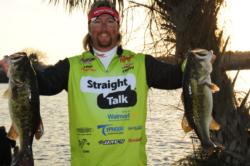 Straight Talk pro J.T. Kenney – Palm Bay, Fla.: “There have definitely been some significant innovations over the past few years. For me, the two biggest things have been the development of the Power-Pole and the Lowrance Structure Scan. I think most people know about the Power-Pole but the Lowrance Structure Scan is simply amazing. You can now literally see how you’re fishing. Basically, with the old-school sonar, you’d idle over a brushpile and it would just appear as a big blob on your screen. Now, with the Structure Scan, you can see that that blob is really a laydown tree. Not only that, you can see that the tree is facing up-current and that there are fish holding to it in a particular way. With the new electronics, you can see exactly how the fish are positioned to a specific piece of structure so you know what presentations you need to make. For me, it’s just totally revolutionized offshore fishing because you can literally see a picture of what it’s like down there.
Straight Talk pro J.T. Kenney – Palm Bay, Fla.: “There have definitely been some significant innovations over the past few years. For me, the two biggest things have been the development of the Power-Pole and the Lowrance Structure Scan. I think most people know about the Power-Pole but the Lowrance Structure Scan is simply amazing. You can now literally see how you’re fishing. Basically, with the old-school sonar, you’d idle over a brushpile and it would just appear as a big blob on your screen. Now, with the Structure Scan, you can see that that blob is really a laydown tree. Not only that, you can see that the tree is facing up-current and that there are fish holding to it in a particular way. With the new electronics, you can see exactly how the fish are positioned to a specific piece of structure so you know what presentations you need to make. For me, it’s just totally revolutionized offshore fishing because you can literally see a picture of what it’s like down there.
The other neat thing that the Structure Scan allows you to do is see things 50 or 60 feet away to the right and left of where your boat is positioned. Now I can scroll my cursor over some brush pile that’s 50 feet away from my boat and put a waypoint on it. Before, we’re never able to mark a waypoint without first idling over some structure. But now all I have to do is stop my boat and cast over to where those brush piles were marked without ever idling by and scaring those fish. Honestly, once you understand how to use the Structure Scan it almost feels like your cheating.
Where this helps the most is with offshore fishing. Now when everyone is crowding the banks, I can head out offshore and find an area where I can catch my entire limit. People call me the “Flipping King,” but honestly, over the past several months I’ve really been concentrating a lot more on how to catch bass offshore. And so far it’s worked out pretty well.”
FLWOutdoors.com: “What techniques would you really like to improve upon heading into the second half of the 2011 season and beyond?”
Straight Talk pro J.T. Kenney – Palm Bay, Fla.: “There is definitely one thing I want to improve upon and it’s the same thing that kicked my butt at the (April 28-30) EverStart Lake Eufaula tournament. I want to figure out how to catch fish when they don’t pull water. When you’re fishing offshore with no wind-generated or power current, how do you get those fish to bite? That’s the next piece of the puzzle I have to figure out. It happens every time. You catch 17 or 18 pounds and they stop pulling current and you only catch 5 pounds. You can see the fish but you just can’t make them bite. And this is something that’s going to keep playing a big factor in a lot of tournaments because a lot of times they stop pulling water on the weekends. And that makes closing out tournaments on the final day a lot tougher. So far, I don’t really know anyone who has completely figured it out but it’s going to keep happening. So I’d really love to know what to do in those situations.”
——————————
FLWOutdoors.com: “In your opinion, what is the most significant innovation in bass fishing over the past few years?”
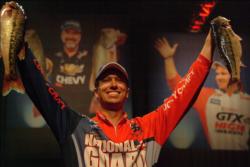 National Guard pro Brent Ehrler – Redlands, Calif.: “For me, I think there are two things that have really changed the sport over the past few years. First, the invention of the Hummingbird side-imaging scan has really impacted the way I’m able to fish tournaments. It’s amazing how much detail the Hummingbird provides when trying to figure out what exactly you’re fishing. You can now see the bottom of the lake almost as clear as a television picture. For the first time I can actually see what I’m fishing. It’s definitely changed the way I fish structure.
National Guard pro Brent Ehrler – Redlands, Calif.: “For me, I think there are two things that have really changed the sport over the past few years. First, the invention of the Hummingbird side-imaging scan has really impacted the way I’m able to fish tournaments. It’s amazing how much detail the Hummingbird provides when trying to figure out what exactly you’re fishing. You can now see the bottom of the lake almost as clear as a television picture. For the first time I can actually see what I’m fishing. It’s definitely changed the way I fish structure.
The other thing I want to mention is the Lucky Craft RC 1.5 crankbait. Before, if you wanted to fish a crankbait with random motion, you pretty much had to rely on those wooden balsawood baits. They were expense, hard-to-find and somewhat unreliable. You’d go out and buy 10 of them, each costing you around $20, and you’d start fishing them and only maybe three would work the way they were supposed to. Also, after fishing them a couple of times, the paint would chip off and the balsawood would swell. So you’d wind up with a bait that didn’t work at all after using it only a few times. Obviously, durability was a big issue. But then Lucky Craft came out with the RC 1.5 and you could take that bait right out of the box and know it was going to work the right way every time. The randomness of the action is what really makes those baits stand out. And I think that RC 1.5 really revolutionized shallow-water cranking. I have full confidence in that bait. And now, anytime somebody says there is a shallow-water cranking bite going on, the RC 1.5 is what I reach for without having to worry about anything else.
FLWOutdoors.com: “What techniques would you really like to improve upon heading into the second half of the 2011 season and beyond?”
National Guard pro Brent Ehrler – Redlands, Calif.: “The thing I really want to get better at is deep cranking. I have no problem fishing a shallow water crankbait, but cranking in deeper water – anywhere from 10 to 25 feet – is something I really want to work on. And this is important because on the FLW Tour, a lot of the tournaments we hit in the summer, that technique really comes into play. When it gets hotter, in late June, July and August, those fish run a lot deeper and (adhere) to ledges. And it’s really helpful to be able to go out there and figure out how to catch those deeper bites, those fish holding to those deeper ledges.”